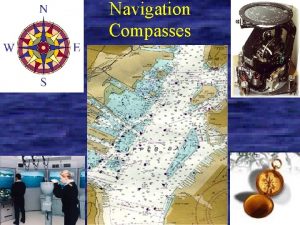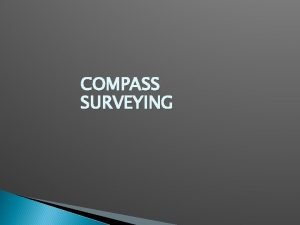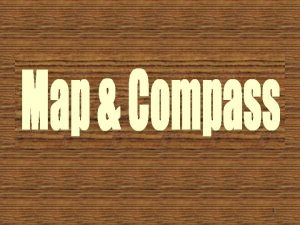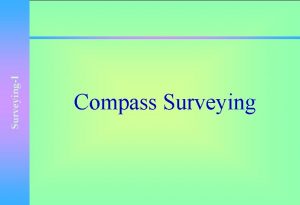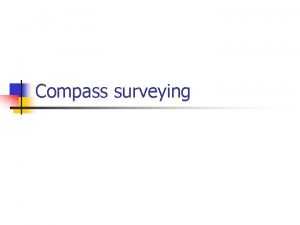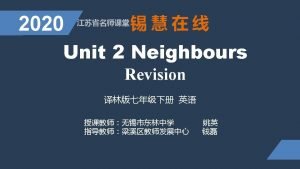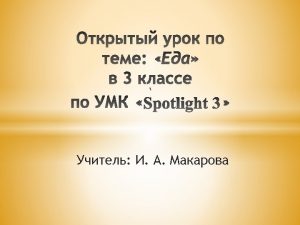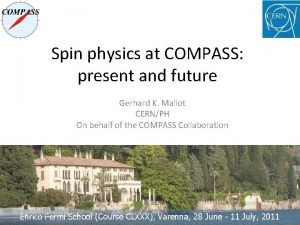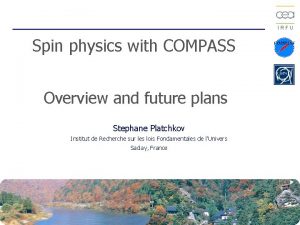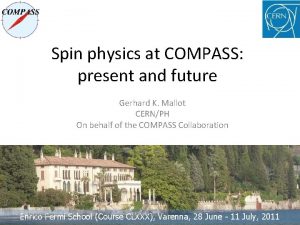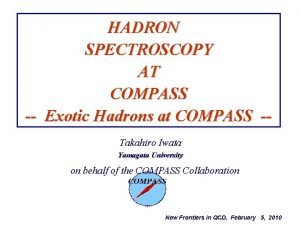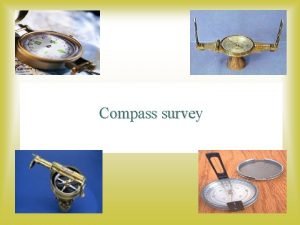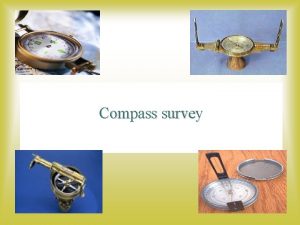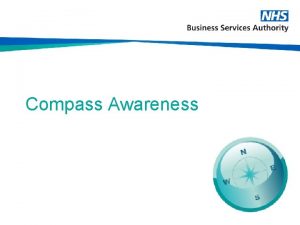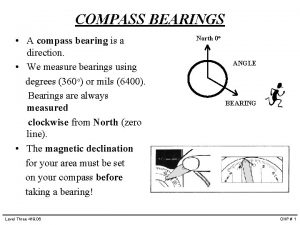COMPASS Physics opportunities for a future COMPASS like

























- Slides: 25

COMPASS++ Physics opportunities for a future COMPASS -like experiment G. K. Mallot for COMPASS EP-SME-CO many slides from Oleg Denisov

Outline • Introduction • Physics with RF-separated beams (kaons, antiprotons) – Spectroscopy – Drell-Yan • Physics with existing muons and hadron beams – SIDIS, DVCS, DVMP – DY • Outlook G. K. Mallot 01/03/2017 PBC CERN

QCD Questions • G. K. Mallot 01/03/2017 PBC CERN

Future plans • COMPASS is preparing a Letter of Intent for a new round of experiments beyond 2020 • Open to new groups and ideas • Starting point: Beyond 2020 workshop March 2016 at CERN • Unique opportunity: RF separated kaon and antiproton beams (in M 2) • Goals: Lo. I in 2017, proposal in 2018 • Likely a 7 -8 year endeavour G. K. Mallot 01/03/2017 PBC CERN

Ideas for a Lo. I • Spectroscopy with RF-separated beams – Kaon: Hadron spectroscopy and diffraction – Kaon: polarisability – Kaon: gluon distribution with prompt photons – Antiproton: Charmonium hybrids and exotics (low pbar energy) • Drell-Yan with RF-separated beams – Kaon: DY with both polarised and unpolarised targets, kaon structure – Antiproton: DY, both polarised and unpolarised, TMDs G. K. Mallot 01/03/2017 PBC CERN

Lo. I (cont’d) • G. K. Mallot 01/03/2017 PBC CERN

Versatile COMPASS in EHN 2 COMPASS-I 1997 -2011 Hadron Spectroscopy & Polarisability Polarised SIDIS COMPASS-II 2012 -2018 Polarised Drell-Yan DVCS (GPDs) + unp. SIDIS

COMPASS polarised target 240 physicists from 12 countries + CERN, 24 institutions G. K. Mallot 01/03/2017 PBC CERN

• G. K. Mallot 01/03/2017 PBC CERN

Light and strange meson sector negative parity positive parity exotic COMPASS: a 1(1420) ? hybrid strange Lattice, J. Dudek et al. , PRD 88 (2013) 094505 COMPASS: 3π data sample ~50 x 106 exclusive events – factor 10 to 100 more than previous experiments, advanced analysis (88 waves) PRD 95 (2017) 032004 Illustration or our potential: discovery of a new axial-vector meson a 1(1420) in 1++0+ f 0(980)π P wave. PRL 115 (2015) 082001 G. K. Mallot 01/03/2017 PBC CERN

Kaon states • B. Grube, Beyond 2020 WS G. K. Mallot 01/03/2017 PBC CERN

Chiral dynamics – e. g. kaon polarisability • PRL 114 (2015) 062002 G. K. Mallot 01/03/2017 PBC CERN

Direct photons from kaons (& pions) gluon PDFs of hadrons • Under study, maybe tests during 2017 GPD run • First observation of direct photon production with a kaon beam could be an important direct measurement of gluon contribution in kaons • No data existing G. K. Mallot 01/03/2017 PBC CERN

• G. K. Mallot 01/03/2017 PBC CERN

`Charmonium-like’ mesons • G. K. Mallot 01/03/2017 PBC CERN

• G. K. Mallot 01/03/2017 PBC CERN

Kaon-induced DY • Kaon-induced DY is the only source of information on kaon structure • Compare pion and kaon-induced DY x-sections • Unpolarised case, possibility to use different nuclear targets (like LH 2, Al, W, Cu): 1. Kaon structure functions (PDFs) 2. Nucleon strange quark structure 3. Fundamental Lam-Tung relation for the kaon 4. Boer-Mulders TMDs (quark-spin – quark-k. T correl. ) for kaons 5. … • Unique opportunity G. K. Mallot 01/03/2017 PBC CERN

Antiproton-induced Drell-Yan Model-independent TMD extraction • TMD (restricted) universality • TMD-induced asymmetries in both High-Mass and J/Ψ regions: 1. 2. 3. 4. 5. 6. • Boer-Mulders (quark-spin – quark-k. T correl. ) extraction (CPT) Transversity extraction Lam-Tung relation for antiprotons (QCD effects) Sivers asymmetry (nucleon-spin–quark-k. T correlations) without uncertainty from pion PDFs Sivers function for gluons (J/Ψ regions) … Unique data G. K. Mallot 01/03/2017 PBC CERN

Drell-Yan rates • Assuming flux of 1 x 107 /s for kaon/antiproton, • High mass range 4 < Mμμ < 9 Ge. V/c 2 • 140 days of data taking with the efficiency of 2015 Drell. Yan run assuming a flux of 1 x 107 /s for kaons/antiprotons • The overall gain for RF-separated beams wrt previous experiments is a factor 50 to 100 Beam G. K. Mallot 01/03/2017 COMPASS++ (proj. ) NH 3 Al W 14’ 000 2’ 800 29’ 600 15’ 750 22’ 500 PBC CERN NA 3 E 537 700 387

Existing muon beams Exclusive processes (GPD) SIDIS with deuteron target Existing hadron beams pol. DY with deuteron target G. K. Mallot 01/03/2017 PBC CERN

Excl. measurements with transv. polarised target • Generalised Parton Distribution (GPD) E and access to Orbital Angular Momentum – DVCS ( μ p↑ μ p γ ) – DVMP ( μ p↑ μ ρ (ω) γ ) • Recoil detector to be inserted into the PT magnet – Several options being studied • unique kinematic range, small x G. K. Mallot 01/03/2017 PBC CERN

Deuteron transversity and TMDs (SIDIS) • Only existing deuteron/neutron data sets: – COMPASS (6 Li. D) and CLAS (3 He) • COMPASS data only from 2002– 2004 • Data set factor 4 smaller than proton set • For flavour separation equal statistics is optimal p G. K. Mallot 01/03/2017 d PBC CERN

Pion-induced Drell-Yan (6 Li. D, LH 2) LH 2 6 Li. D • Pol. proton DY data in 2015/2018 • Pol. deuteron DY data needed for flavour separation of PDFs • Shorter run with unpolarised LH 2 target is required – to test fundamental Lam-Tung relation – to extract Boer-Mulders TMD using “clean” (no nuclear effects) LH target – complementary to SIDIS. • Simulation for 140 days of beam: Unique, no competitors G. K. Mallot 01/03/2017 PBC CERN

Astrophysics – search for dark matter, possible contribution from COMPASS - New AMS(2) data – the antiparticle flux is well known now (few % pres. ); - Two types of processes contribute – SM interactions (proton on the ISM with the production for example antiprotons in the FS. ) and contribution from dark matter annihilation; - In order to detect a possible excess in the antiparticle flux a good knowledge of inclusive cross sections of p-He interaction with antiparticles in the FS is a must, currently the typical precision is of 30 -50%. Thus the primary goal is to measure inclusive antiproton (positron, gamma) production cross section in a wide kinematical range with the precision <10%. Compared to NA 49 COMPASS has factor ~1000 in luminosity. COMPASS: • Proton beam energy range 50 -250 Ge. V • Secondary particles identification: • Antiprotons (RICH) • Positrons and Gamma (ECals) G. K. Mallot 01/03/2017 PBC CERN

Outlook • Many open questions and important measurements remain on hadron structure and spectroscopy • The COMPASS spectrometer is a unique facility and well adapted to the proposed measurements • Upgrades in various places are inevitable for a 7– 8 year programme after 2020 • An extended collaboration has to be built on the COMPASS nucleus • RF-separated kaon and antiproton beams would open a new chapter in structure and spectroscopy studies M 2 muon beam option should be kept if possible G. K. Mallot 01/03/2017 PBC CERN
 Future continuous tense rules
Future continuous tense rules Future perfect continuous and simple
Future perfect continuous and simple C d m v t
C d m v t Fore bearing and back bearing
Fore bearing and back bearing Future-compass
Future-compass Perfect future tense
Perfect future tense Simple present past future tense
Simple present past future tense Future continuous future perfect exercises
Future continuous future perfect exercises Future nurse programme
Future nurse programme Future
Future The present continuous for future
The present continuous for future Tenses in english
Tenses in english Future plans and finished future actions
Future plans and finished future actions Future perfect tense
Future perfect tense Kondicional 1 engleski
Kondicional 1 engleski Modern physics vs classical physics
Modern physics vs classical physics University physics with modern physics fifteenth edition
University physics with modern physics fifteenth edition Ib physics ia examples
Ib physics ia examples Formuö
Formuö Novell typiska drag
Novell typiska drag Nationell inriktning för artificiell intelligens
Nationell inriktning för artificiell intelligens Returpilarna
Returpilarna Varför kallas perioden 1918-1939 för mellankrigstiden
Varför kallas perioden 1918-1939 för mellankrigstiden En lathund för arbete med kontinuitetshantering
En lathund för arbete med kontinuitetshantering Underlag för särskild löneskatt på pensionskostnader
Underlag för särskild löneskatt på pensionskostnader Tidbok för yrkesförare
Tidbok för yrkesförare


